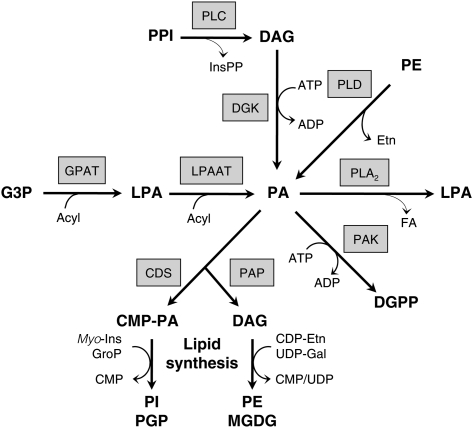Fig. 1.
Complexity of PA and LPA metabolism. PA is formed by successive acylations of G3P and LPA for de novo synthesis of glycerolipids, but it can also be formed through the stress-induced activities of PLC/DGK and PLD. For the synthesis of PI and PG(P), PA is converted to cytidine monophosphate-phosphatidic acid (CMP-PA) by CMP-PA synthase (CDS), and for the synthesis of PE and MGDG, it is dephosphorylated by PAP. Note that the PA/DAG substrates in the synthesis of PE and MGDG are different pools localized at the ER and plastidial envelope membrane, respectively. During salt stress, Chlamydomonas cells accumulate the alternative PA metabolites DGPP and LPA. The latter is suggested to originate from PA-hydrolyzing PLA2 activity.

